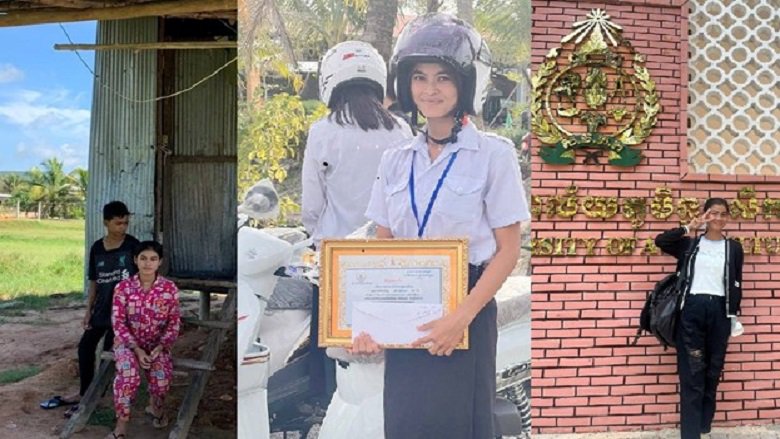Challenge
More than 60 percent of Cambodian children of lower-secondary-school age (12–14) were out of school in 2015, and 21 percent dropped out. Around 70 percent of sampled schools were short of classrooms. Teacher shortages were serious, and the majority of Cambodian teachers held low qualifications. As a result, student learning outcomes were low, with only eight percent of 15-year-old students reaching the minimum level of reading proficiency, as required by the Sustainable Development Goals, and just 10 percent achieving the minimum level of proficiency in mathematics, based on the PISA-D results in 2018.
Approach
The Secondary Education Improvement Project (SEIP) sought to expand lower-secondary education to achieve minimum standards in target areas by implementing several innovative interventions. First, the project created high demand for quality education among parents and communities by introducing school-based management to improve school autonomy, accountability, and assessment. Parents and communities were fully informed of the performance of students and schools and actively engaged in their children’s education. Second, teachers, school leaders, and community representatives received interconnected training and mentoring to perform their roles more effectively. Third, performance-based disbursement improved the flexibility and efficiency of spending, including the financing of eligible expenditures on the pandemic response (distribution of laptops, production of teaching videos, payment for connectivity fees, training on information and communications technology [ICT]).
Results
The project supported the implementation of Cambodia’s education strategic plan for improving the quality of and expanding equitable access to secondary education. Project achievements included the following:
- Improved school operations, learning facilities, and capacities of teachers and school leaders and benefited 453,838 students, 52 percent of them girls.
- Thanks to active support by parents and communities in preparing school improvement plans, monitoring school performance, and attracting external financial resources, 94 of 100 schools achieved minimum standards of school effectiveness.
- The project helped establish 30 new lower-secondary schools, with projected enrollment of around 6,175 students; constructed 76 new buildings, with 395 classrooms; renovated 437 classrooms; installed 276 laboratories or subject learning facilities; and constructed 30 houses for teachers at remote schools.
- The project upgraded the qualifications of 636 school leaders and 2,348 teachers, trained 435 school management committee members and community representatives, and provided on-site coaching to all project schools.
- The spillover effects of the project’s school-based management extended to 102 secondary schools and 166 primary schools that were not part of the project.
World Bank Contribution
The project cost $41.4 million, including an IDA credit of $40.50 million equivalent and $0.9 million of counterpart fund from the Cambodian government to provide incentives for civil servants actively engaged in project implementation.
Partners
The Ministry of Education, Youth and Sport (MoEYS), the implementing agency, assigned implementing and supporting departments and staff based on their official roles and responsibilities under the ministry’s organizational structure to implement the project’s core activities, clearly indicating its full ownership of the project. In addition to biannual implementation support missions, the World Bank task team provided regular capacity-building and hand-holding support to swiftly address implementation challenges.
Looking Ahead
The project’s impact continued after project completion. The MoEYS incorporated project activities into its national education policies and established a national committee to implement those policies. Many nontarget schools (213 secondary and 560 primary schools) implemented the activities. The government of Cambodia requested a General Education Improvement Project, with an IDA credit of $60 million equivalent (approved by the Board January 18, 2022) and a Global Partnership for Education (GPE) grant of $9.25 million to scale up implementation. A $60 million IDA credit to activate a co-financed GPE multiplier grant of $20 million is being prepared.
